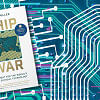An intimate history of Bangladesh cricket

I: The Toss
The launch of Eye on the Ball on January 7, 2023, coincided with the anniversary of the MCC match at Bangabandhu National Stadium during 1977. This was the first match where Bangladesh got a taste of international cricket. The author, Yousuf Rahman, top scored in that match. This book is the author's personal reflection and that of others who have been associated with Bangladesh cricket and for whom "cricket is life", as the first sentence of the foreword states.
There is no shortage of anecdotes in the coffee-table book. These anecdotes will start discussions between friends, or Google searches to dig more if you are going to have coffee on your own. The book's subtitle that reads, "a picture is worth a thousand words", keeps the reader visually delighted with generous anecdotes.
II: The First Innings
The Table of Contents is organised in the spirit of the three sessions of a day's play of a Test match. The match starts with how cricket came to British India. And thus starts one anecdote after another. A cricket match was first held on March 3, 1845, in today's Balisera Tea Garden in Sreemangal in Bangladesh. This predates the Parsi Oriental Club of Bombay, and the birth of WG Grace.
The reader finds out that Bangabandhu National Stadium is the only venue to have hosted Test matches of two countries. The first in the Pakistan period was in Jan 1955. The next was the first Test in independent Bangladesh (November 2000). On both occasions, India was the opponent.
The role of Dhaka University in the development and popularisation of cricket in the Pakistan era and early Bangladesh era is well documented, as has been the role of clubs, the first-class structure and BKSP after the birth of Bangladesh. The book presents the many hurdles Bangladesh cricket crossed till the victory in the 1997 ICC Tournament, the 1999 World Cup victory against Pakistan and the ultimate prize, gaining Test status in 2000.
During the lunch break, the reader is taken on a pictorial trip through Bangladesh.
III: The Second Innings
The second session starts with the development of ladies' cricket. The book then delves into the role of private sponsorship including Nirman and others. The reader learns of Faisal Khan and Mohammad Mohasin and how the Bangladesh Cricket Association for the Physically Challenged (BCAPC) and the Wheelchair Cricket Welfare Association of Bangladesh (WCWAB) have promoted the game. BCAPC in a three-match series defeated India 2-1 in Agra in 2014. These are one of the many stories that sadly elude the media.
'Pride of Performance' inserts short introductions to players of the past and the present. The book includes the personal stories of luminaries and their association with Bangladesh cricket. The author and the team did a wonderful job in assembling all these personalities into one edition.
Keeping in spirit with the title, Eye on the Ball, the book does not lose focus on some "dirty beamers" of Bangladesh cricket. This includes match-fixing scandals, umpire scandals, players' strike, a rebel tour, and personal challenges ruining careers.
IV: Stumps
The information in the book was either in the public domain scattered everywhere, maturing in secret cellars or in somebody's heart never discussed in public. It needed a herculean teamwork of coordination and passion to present the game of "cricket, lovely cricket" that expresses the heart of Bangladesh and transcends all boundaries.
The book is pricey, but it is worth its weight in passion from the beginning right to the end. At stumps, the reader will want to go back and revisit the day's play to check if they missed out any detail.
Asrar Chowdhury is a Professor of Economics at Jahangirnagar University and the author of Echoes, the fortnightly column in SHOUT magazine. Email: [email protected].

 For all latest news, follow The Daily Star's Google News channel.
For all latest news, follow The Daily Star's Google News channel. 











Comments